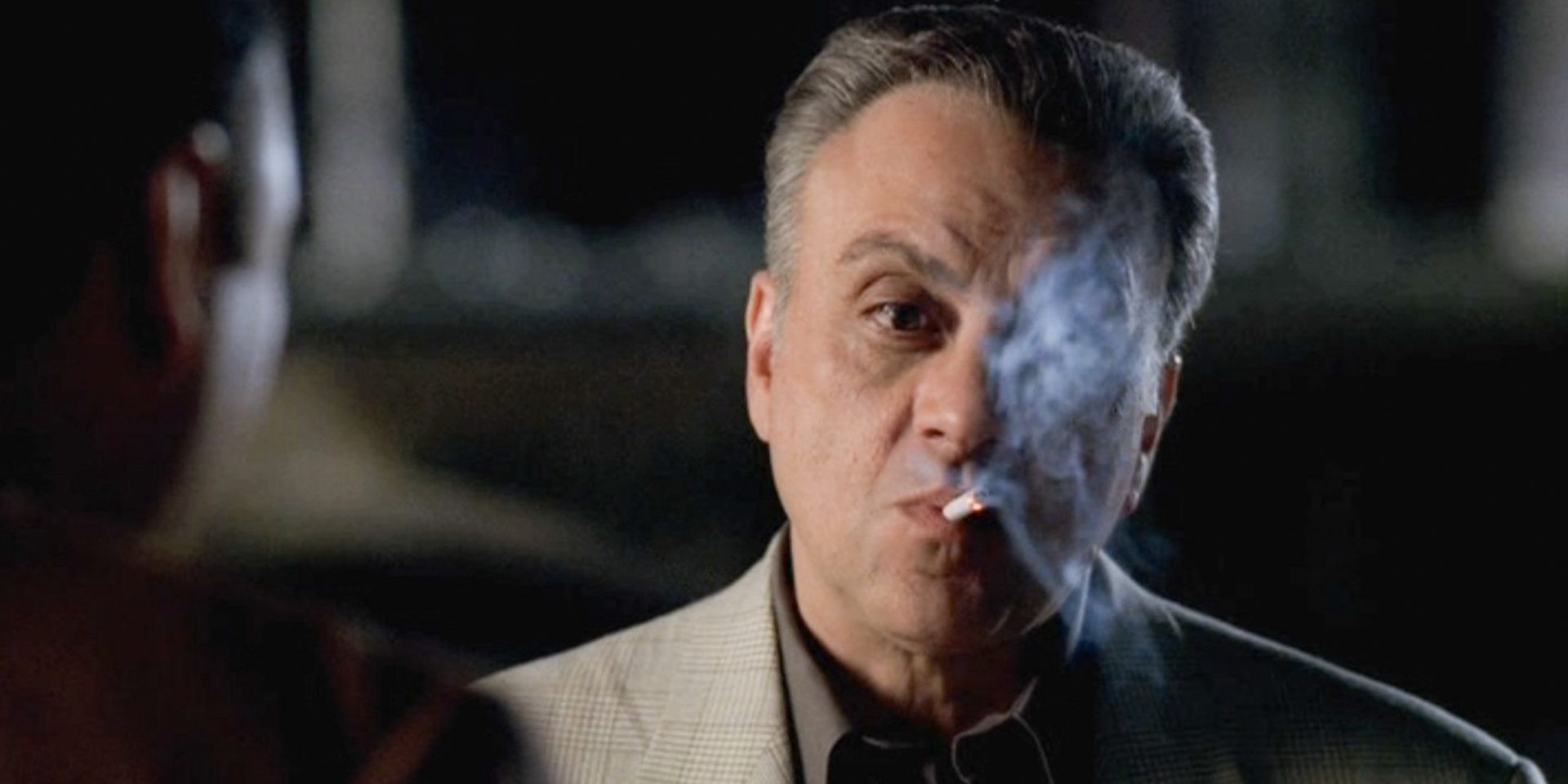
Why did David Chase change the original ending of his HBO series The Sopranos? In 2007, the iconic show concluded with "Made in America," a controversial episode with a cryptic ending that continues to baffle audiences, especially those who want and need proper narrative closure. During a 2019 interview, Chase revealed the specifics of his initial series-ending scenario, one that's thematically similar to the final version yet more obvious about the fate of the series protagonist and anti-hero, Tony Soprano, portrayed by the late James Gandolfini.
During The Sopranos' six-season run, the series gained a loyal fanbase for its brutalism and psychological themes. Audiences grew to love characters like Adriana La Cerva (Drea de Matteo) and her deeply-flawed fiancee Christopher Moltisanti (Michael Imperioli), which made their violent series exits so emotionally impactful. By the final moments of "Made in America," there's a sense of unease as Tony worries about the impending collapse of his organization, but there's also a sense of hope as the mob boss watches his wife Carmela (Edie Falco) and son A.J. (Robert Iler) arrive at Holsten's diner in New Jersey for a meal, all to the sounds of Journey's "Don't Stop Believing." Just as Tony's daughter Meadow (Jamie-Lynn Sigler) walks in, though, The Sopranos abruptly ends with a cut to black.
Related: The Sopranos: Why Adriana's Season 5 Death Happened Off-Screen
In 2019, Chase discussed his original ending with The Sopranos Sessions authors Alan Sepinwall and Matt Zoller Seitz (via USA Today). He actually acknowledges the cut-to-black sequence as a "death scene," and states that he conceptualized the series climax years before. In the original version, Tony heads off to meet with the main boss Johnny Sack (Vincent Curatola) in Manhattan, and a theoretical cut to black during a Lincoln Tunnel driving sequence would've implied to viewers that "something bad" happens. According to Chase, he didn't want the subtext to be obvious:
"I didn't want you to feel like, 'Oh, he's meeting with Johnny Sack and he's going to get killed."

During The Sopranos Sessions conversation, Seitz actually points out that Chase referred to the diner sequence as a "death scene," which prompts the showrunner to clarify his intentions. "We all could be whacked in a diner," Chase says, "That was the point of the scene." However, there are blatant clues to suggest that Tony does indeed get killed just as Meadow enters the diner. In what seems to be a cinematic homage to The Godfather, a diner patron nervously looks around while Tony's daughter looks for a parking spot, and he then enters a bathroom. It may seem like an inconsequential moment, but it thematically parallels a famous restaurant sequence during Francis Ford Coppola's 1972 classic, in which Michael Corleone (Al Pacino) meets two men at a restaurant for a business meeting, only to murder them after retrieving a hidden gun in the bathroom. During the six seasons of The Sopranos, Chase includes numerous references to The Godfather.
The Sopranos' cut-to-black ending has been interpreted in a variety of different ways, which naturally boosts its legacy and inspires a new generation of audiences to deconstructs what it all means. During The Sopranos Sessions interview, Chase notes that "No matter what I say about it, I always dig myself in deeper," and Sepinwall later tweeted that the showrunner's comments about the ending have been "wildly" misinterpreted. But the "death scene" comment does indeed seem to be a Freudian slip, one that implies a dark fate for Tony Soprano at Holsten's diner.
from ScreenRant - Feed https://ift.tt/3oz4hcX






0 Comments
Please don't use vulgar comments and avoid discussion on Religious matters